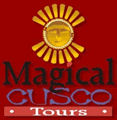 |
| Click On This Photo For Professional High Quality Peru Tours From Magical Cusco Tours Just Mention delange.org With Code Inka2010 Get A 4% Tour Discount With Any Package Tour Purchase! |
|---|
Pictures, Photos, Images, & Reviews.
Google Map To Cusco or Cuzco, Peru.
View Larger Map
Cusco is considered to be the Oldest Existing City of America. Its history is estimated to be well over 5,000 years old. It is also considered to be the most important tourist center in Peru. The famous archaeologist, Richard Stockton MacNeish (April 29, 1918 � January 16, 2001), revealed the oldest dates for the first Peruvians: 18 to 20 thousand years B.C. for the Pacaicasa Man around Ayacucho. But, there are several different theories concerning who were the founders of Cusco. Some authorities, such as, Victor Angles suggests that they could be the say they were the Sawasiras, Antasayas and Wallas tribes who initially inhabited the Watanay Valley near the Marcavalle area of Cusco. Others base their theories upon the Inca mythology, according to which, Manko Qhapaq and Pachakuteq founded the city. It is said that the Inca civilization began when the Creator and sun god Viracocha's offspring Manko Qhapaq (Manco CapacManco Capac), legendary founder of the Inca dynasty of Peru (the first ruling Inca) and Pachakuteq (Mama Occlo) arose from the Isle de Sol in Lake Titicaca. Lake Titicaca sits 3,812 m (12,507 feet) above sea level making it the highest commercially navigable lake in the world. By volume of water it is also the largest lake in South America. Somewhere near Copacabana, Bolivia. They were sent with a golden rod to find the Q'osqo or navel of the world and to begin the civilization. Manco Capac was commanded to find a place where he could push the rod into the ground until it disappeared. When he found it, that was to become the center of the universe. The original shape of Cuzco was in the form of a puma. Roads and canals formed the outline of the body and legs, while Sacsayhuaman was the head and its 22 zigzagged walls formed the teeth None of these theories have been proven, but there is a great deal of evidence based upon pre-ceramic samples that support the 5000 + year history assigned to the city of Cusco. The pre-ceramics evidence that has been found corresponds to the people of the Yauri region or of the Chumbivilcas region, with an approximate age of 5 thousand years B.C., and also to the shepherds of the Canas in Chawaytiri; and to the people of Qorqa or Cusco, who were engaged in farming. During the Formative period, the city of Cusco began to be inhabited at the western part of the valley of the Watanay River; known as the Watanay Valley or Cusco Valley. During the sedentary period, about 1000 years B.C.; The area known as Marcavalle was selected as the place for its establishment. Marcavalle was established at the eastern side of the city, and it had a population made up of farmers and shepherds. By about 800 B.C., the Chapanata culture was developed, and by about 600 A.C. the Qotakalli culture was created. This culture was the first region of an established system of Regional States. Later on, as a consequence of the Wari invasion, the Killki regional state was created in about 800 A.C., and the Lucro state was established in about 1000 A.C.. The beginning of the Inca civilization began in about 1200 A.C. and its expansive phase occurred during the 1400�s A.C. The subsequent part of the history is known. On November 15th 1533, the Spaniards arrived and created the fall of the Inca Empire and a very hard disruption to the culture of the native people that moved the capital from Cusco to Lima. However, the fighting spirits of the Inca people did not move to the new capital; on the contrary, they stayed in Cusco. One of the main events was the raise of Mako Inka, from 1536 to 1572, when the last member of the Inca dynasty, Tupac Amaru I, was defeated after a war that lasted 36 years, and executed by the conquistador�s from Spain by cutting his head off in Qosqo's Main Square. Later on, the biggest precursor of the Peruvian independence, Tupac Amaru II or Jos� Gabriel Tupac Amaru Inga, in 1780, started a new rebellion that, indubitably, set the most significant precedent against the Spanish Regime in America. Unfortunately, a betrayal caused his defeat and execution together with his family in the Main Square of the same city that witnessed his birth. Then the Mateo Pumacahua, and the Angulo Brothers, initiated another rebellion between 1814 and 1815. Finally, in 1821, as a result of the infinite fights and the integral South American support, Peru obtained its independency from Spain. And by 1933, Cusco was declared the "Archaeological Capital of South America" during the Latin Americanists Congress carried out in Argentina. Not only did trebellions shake the city, but also the so did mother nature with a 7� earthquake in 1950 that only left a fourth part of its original buildings standing. Due to its great cultural and historical significance, the city of Cusco received many worldwide acknowledgements. Perhaps the greatest was in 1978 during the 7th Convention of Majors from Great Worldwide Cities, carried out in Milan, Italy. There, Cusco was declared as the "Cultural Heritage of the World". Then in 1983, UNESCO granted it the title of "Cultural Heritage of the Humanity". Then on on December 22nd 1983, Peru declared the city of Cusco as the "Tourist Capital of Peru" and "Cultural Heritage of the Nation".
|
The Alejandro Velasco Astete International Airport (IATA: CUZ, ICAO: SPZO) is located in the city of Cusco, a city in southeastern Peru. Cusco, a principal tourist attraction in Latin America, receives various domestic flights as well as some international flights. There are several Guided Tour Agencies offering standard city and archaeological tours of the areas of Cusco.
This page is for information purposes only and while we have made every effort to be accurate, it is the travelers responsibility to make the appropriate choice as to which hotels to use in Peru.
We found that when touring Peru, Magical Cusco Tours gave us the best service of all. They even arranged very personal tours based upon our ages and experience. They were there for us whenever we needed them. Click on any of their links on our pages and they will give you a 4% discount for taking their package tours. Mention delange.org. Merchant Code Inka2010 for your discount! We suggest letting Ana Maria handle your tour. Note: The 4% discount applies to package tours only! Discount does not apply to hotel bookings, domestic or international tickets, meals or any other service booked as a single activity.
Magical Cusco Tours also has a culinary tour that you may enjoy.Click Here For: Taste Of Peru.com their culinary tour page.
We also have links to Priceline.Com on our pages, in case you may prefer to use their services.
|
 |
| Cusco City Map |
|---|
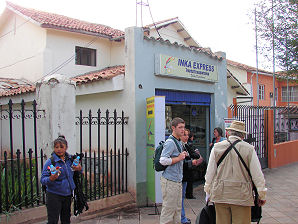 | 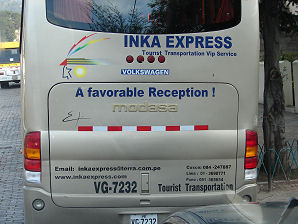 |
| Inka Express Bus Depot | Inka Express Bus |
|---|---|
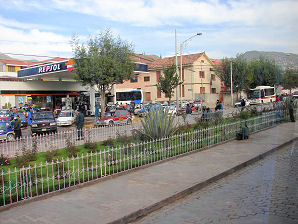 | 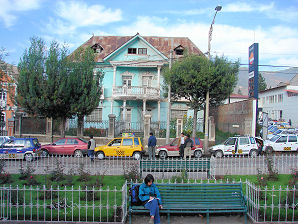 |
| Gas Station | Nineteenth Century Building |
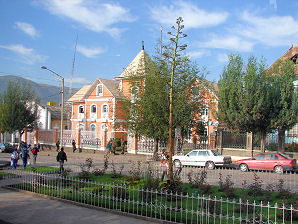 | 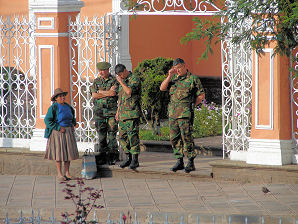 |
| Government Building | Military Guards |
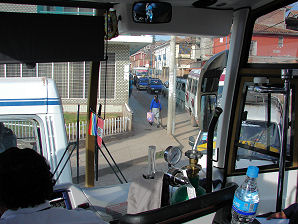 | 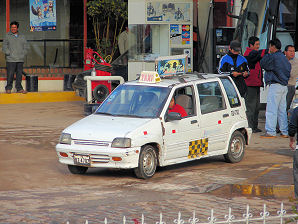 |
| Cusco Rush Hour Traffic We Are On Our Way | Typical Cusco Taxi |
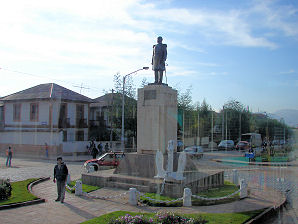 | 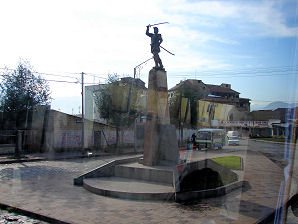 |
| Cusco Statues | Cusco Statues |
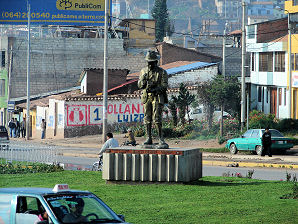 | 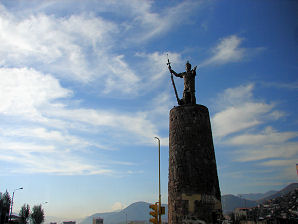 |
| Cusco Statues | Cusco Statues |
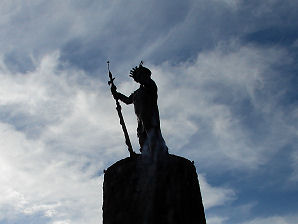 | 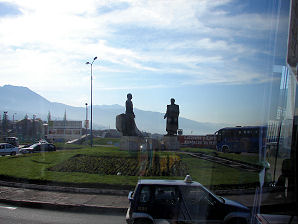 |
| Cusco Statues | Cusco Statues |
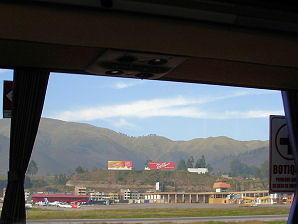 | 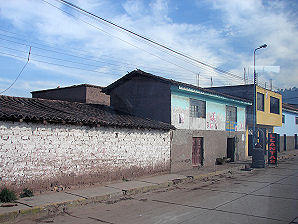 |
| Cuzco Airport | Cusco Streets |
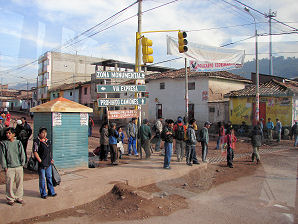 | 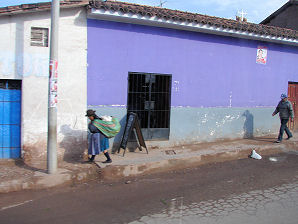 |
| Cusco Streets | Cusco Streets |
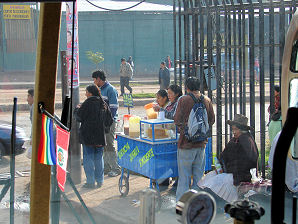 | 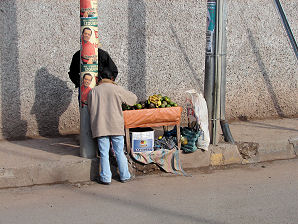 |
| Cusco Streets | Cuzco Streets |
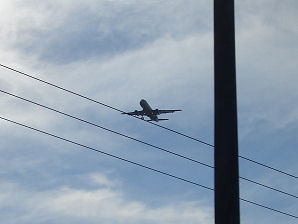 | 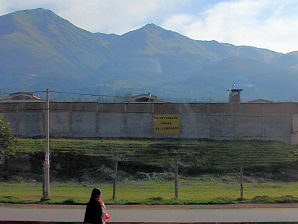 |
| Airplane Landing Cusco Airport | Cusco Streets |
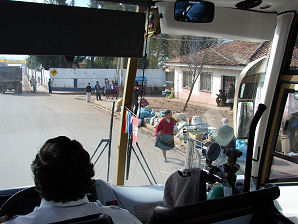 | 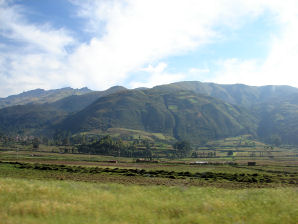 |
| Leaving Cusco For Puno | A Few Miles NE Of Cusco |
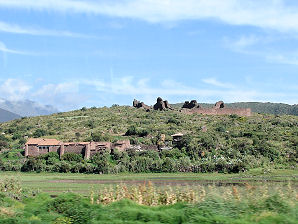 | |
| Scenery NE Of Cuzco | Scenery NE Of Cuzco |
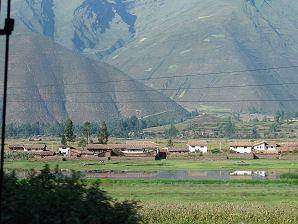 | 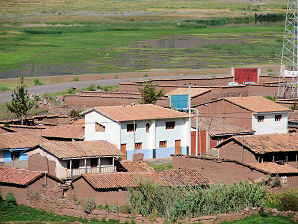 |
| Scenery NE Of Cuzco | Andahuaylillas Village |
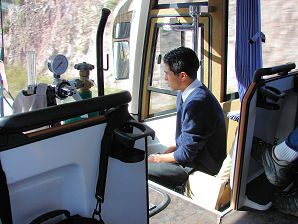 | 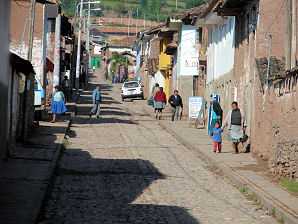 |
| Our Tour Guide | Driving Into Andahuaylillas Village |
 | 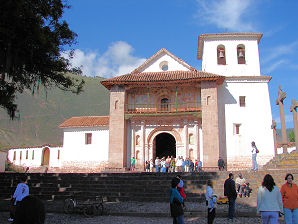 |
| Driving Into Andahuaylillas Village | Andahuaylillas Village And The Church Of San Pedro |
We Are Proud Of Our SafeSurf Rating!

Click On Any Of The Following Links By Amazon.Com
For Books About Hiking Or Touring In Peru.
Some Are Must Have Books - If You Are Going To Peru.
We Also Are Including Some Great Music CD's & DVD's. No Obligation!

To Cusco Places To Visit Page
To Cusco History Page
To Cusco To Puno Tours Page Two
Cusco To Puno Tours Page Three
To Cusco To Puno Tours Page Four
Back To Puno Tours Main Page
Back To Peru Tours Main Page
Back To DeLange Home Page






